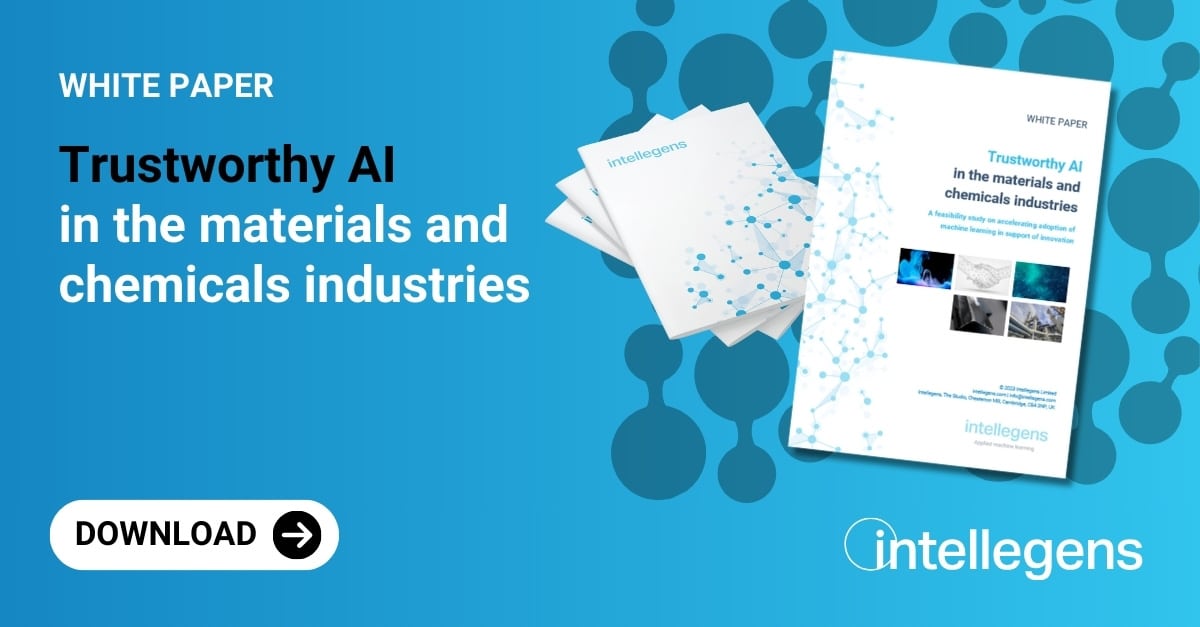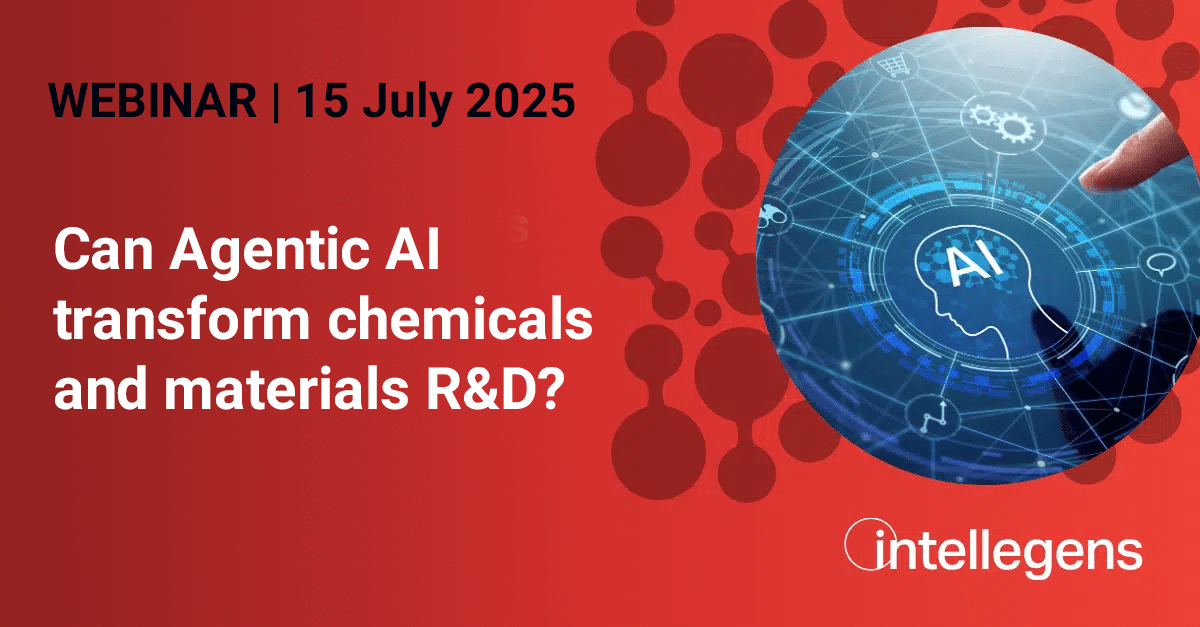A feasibility study on accelerating adoption of machine learning in support of innovation
This white paper summarises the results of an industry collaborative project funded by Innovate UK, coordinated by Intellegens, and with partners including Johnson Matthey, Domino Printing Sciences, Goodfellow, Welding Alloys Group, the Henry Royce Institute, and the Universities of Cambridge and Leicester. The project aimed to understand the current state of machine learning in the chemicals and materials sectors, assess the potential for and benefits of wider application, and identify factors that constrain adoption.
Executive summary
This white paper reports the results of a project supported by Innovate UK and involving a Consortium of industry and academic partners coordinated by Intellegens, to identify factors limiting the adoption of AI in the chemicals and materials sectors, particularly in R&D and process optimisation. The aim of the study is to guide future work, at both an industry and organisational level, to enable more effective application of AI technologies, particularly machine learning (ML). This work is motivated by the strategic importance of these industries, which are worth over £74bn to the UK economy and over $5 trillion globally, and the potential of AI to tackle key challenges for the sector. These include accelerating innovation, responding in an agile manner to price and supply chain volatility, navigating complex regulatory environments, and achieving net zero and sustainability goals.
We have found strong industry interest in adopting AI/ML technologies, particularly, initially, in R&D. Many organisations have made a good start, often with positive outcomes. We could identify many case studies of successful use and have shared some in this paper. Those that are yet to implement AI/ML at all in areas such as design of experiments are certainly behind the curve. But we have also found plenty of scope to widen, deepen, and accelerate this implementation in every organisation studied, with current projects often confined to expert project teams or a small number of pilot projects. We identified some of the key issues that might act as a brake on adoption. These included issues of organisational culture, concerns about the transparency of the technology, and the state of data management and integration with other information technologies.
We conclude that a step-change in the application of machine learning to support innovation in the industries studied is both desirable and achievable – indeed, it is inevitable. This will primarily be driven by individual research organisations making smart return on investment decisions informed by growing evidence of the value of the technology. But this process can be accelerated and facilitated by proactive steps to mitigate organisational and cultural barriers to adoption, by industry-level education initiatives, and by commercial software and service vendors optimising their offerings. We have suggested some areas on which to focus future efforts – both industry-wide, for individual chemicals and materials organisations, and for vendors. More detailed analysis and action in these areas might be the focus for future industry collaboration.


